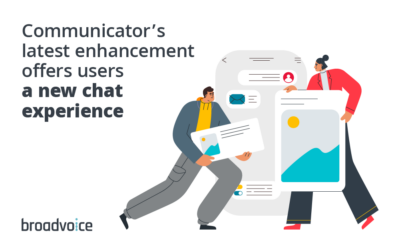Pop Quiz: How many companies in today’s economy compete primarily based on customer experience?
Answer: A lot.
In fact, Gartner found a whopping 66% of companies are hyper-focused on winning business based on experience alone — up from 36% in the 2010s.
Unfortunately, you don’t always know if customers are unhappy with your service. It’s not like they all call your center and say, “I’m so unhappy with your company! You’ve lost my business!” Most of the time, customers grow more distant until they decide to leave. You may not even realize they were unsatisfied and drifting away.
The good news is that there are ways to minimize the drift by measuring your customer experience (CX). Fortunately, you can monitor CX using specific key performance indicators (KPIs) and call center metrics. This can be done with virtual call center technology that has real-time data analytics and reporting features.
Key KPIs You Should Be Tracking in Your Virtual Call Center
Tracking call center metrics is a top strategic initiative for businesses big and small. So, you need virtual call center technology that lets you track KPIs and metrics, and then offers key insights on how to improve. Here are some common KPIs and what they reveal about your customer experience.
Average Speed of Answer
What it is
Average speed of answer (ASA) measures the average time it takes for customer calls to be answered by an agent. Calculate it by dividing the total wait time for all answered calls by the total number of calls answered during a specific period.
What it tells you
If your virtual call center agents are letting calls ring and ring (and ring) before answering, it may indicate you’re understaffed. Or your agents aren’t engaged in the service they’re providing. Why? Maybe your call volume is too high and they’re still on another interaction. Perhaps they’re spending too much time in post-call status. Or, maybe they lack motivation because they can’t answer the same question even just one more time today. You’ll need to dig in, but a low ASA indicates a need for optimization.
Average Handle Time
What it is
Average handle time (AHT) looks at the typical duration of customer interactions, from the moment an interaction is initiated until it is completed, including any necessary after-call work. AHT encompasses the time an agent spends talking to the customer and any time spent on hold, transferring the call, and documenting the interaction.
What it tells you
Long calls can reveal training gaps or inefficiencies. While keeping the time-to-resolution as short as possible is important, your goal shouldn’t just be short resolution times. You want to provide customers with a quick resolution without hustling them off the phone. Being too hasty to hang up can lead to repeat calls.
Check out this blog post to improve your center’s average handle time.
On-Hold Time
What it is
Aptly named, on-hold time refers to how long a caller is on hold or kept waiting before they’re connected to a live agent or assisted with their inquiry. It’s often tracked along with other key indicators like ASA and AHT to evaluate the efficiency and effectiveness of your customer service operations.
What it tells you
No one likes to wait on hold. This metric gives virtual call center managers insight into how long the average caller waits on hold before connecting to an agent. Extended hold times frustrate customers and increase the chances of a customer abandoning the call. Because customers are more likely to leave a company and tell others about poor customer experiences, it’s crucial to provide help as quickly as possible.
Call Abandonment Rate
What it is
Call abandonment rate measures the percentage of callers who hang up (or abandon) their call before talking to an agent or resolving their issue. It’s particularly helpful in assessing your team’s efficiency and quality of care.
What it tells you
This KPI is related to overall customer satisfaction and on-hold time. Customers hate being stuck on hold and only have so much patience before hanging up. Tracking this metric can identify problems in real-time. And then, when monitored over time, it shows long-term patterns like technological problems or issues with staffing.
Hold Time Before Abandonment
What it is
Also known as the “abandon by” interval, this metric provides insight into how long customers wait on hold before they abandon the call. For example, long-term data analysis may show that most customers hang up at the four-minute mark. This is great information for you to have so that you can come up with a solution, such as adjusting your auto attendant to include FAQs or giving the option to leave a message after three minutes.
What it tells you
By analyzing hold time before abandonment, you can identify trends and patterns in caller behavior and assess the effectiveness of your agent’s call handling procedures. Reducing hold time before abandonment usually involves strategies to minimize wait times, like optimizing call routing, adjusting staffing levels to match call volume, providing estimated wait times to callers, offering callback options, and improving overall efficiency in handling incoming calls.
Timeout Call Rate
What it is
A timeout occurs when a caller hangs up or disconnects the call after waiting for an extended period without being connected to an agent. This can happen if the caller becomes frustrated with the wait time or if they perceive that their call is unlikely to be answered within an acceptable timeframe.
What it tells you
High timeout call rates may indicate issues like long wait times, insufficient staffing levels, or inefficient call handling procedures. To reduce timeout call rates, consider optimizing call routing, adjusting staffing levels, providing estimated wait times, or offering alternative communication channels like callbacks or self-service options.
Check out this blog post for more call center metrics you should be tracking.
The Broadvoice b-hive Virtual Call Center
A low customer retention rate is like a bucket with holes in it. Sure, you can add more liquid to make up for the leak. But it’s far more effective to actually patch the holes. Monitoring your virtual call center KPIs helps you patch the holes.
The b-hive Virtual Call Center makes it easy. It’s an agile and intuitive cloud solution that integrates with the b-hive UCaaS platform. By combining your call center and UCaaS solutions, you can track, map, and improve your entire customer experience.
Learn more about how our virtual call center helps you track KPIs to improve the customer experience by scheduling a demo.
This post originally published on February 20, 2020 and was updated on March 14, 2024.









